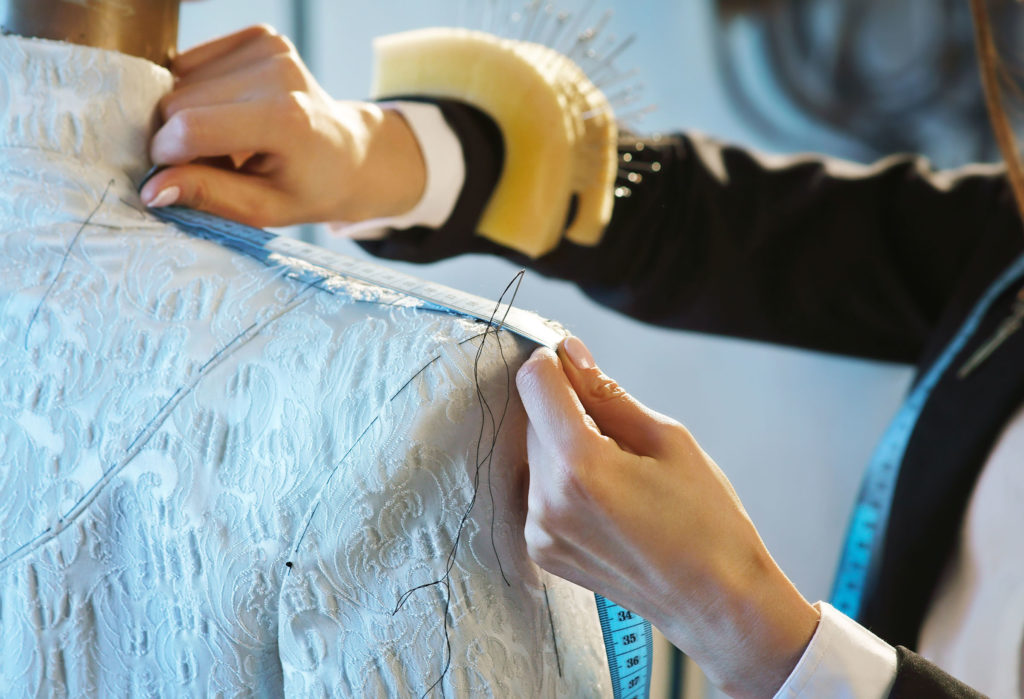Posted Mon, Sep 11, 2017
in
Fashion
This idea has been on my mind for the last couple weeks, in part because of a few different but related, recent conversations with clients and potential clients, and in part because it's NYFW, and the glamorous side of the business is on full display. The concept behind what I call, the "Project Runway Effect," is that so many people have this idea that creating garments and starting a fashion design company is a lot easier, or really a lot FASTER than it really is.
Some of this is the fault of shows like this, and some is the fault of the Fast Fashion industry, and consumers are conditioned to see fashions go immediately from the runway to the stores. It appears that these beautiful designs are created overnight -- and they do on screen -- but what people
don't see is how designing ONE single garment for a model is vastly different from designing and
developing a garment, or a full collection, for mass production. I think a lot of people just don't realize how much goes into each garment before it is ready to be sewn in a factory or sold at retail.
Starting a fashion business is hard work, and it doesn't happen overnight. That doesn't mean you shouldn't start your business! Just know, that like any other business, it's not easy, and unlike some other types of business, fashion is a very front-loaded investment. Before you can start selling and making money on your designs, there's a lot that goes into the development of your products. You need to allocate the right budget and
adequate time to get it right. You have one opportunity to impress your customers, rushing through the process, or deciding to put something into production before it's ready, just isn't a good idea!
My advice for using your time well: 
1. DON'T try to speed through the development phase.
A good rule of thumb for design and development, is to follow the standard timeline of 12 months. It's September, and most clients are now designing for Fall 2018. Some clients, who are established and more nimble in their development cycles, are designing for Spring 2018. Yet, I will still get a few requests for people who want to work on Holiday 2017. Unless you are working at a very small scale, already established in the market, this is a bad idea. Think about when holiday sales start: October and November. Back out a few weeks for production, and your product/s should already be done by now, not at the beginning stages. Taking a longer time, 12-18 months, for the first collection, is not uncommon. There's a lot more than just the clothes themselves to think about. Don't beat yourself up trying to rush through it, and do it right!
2. DO know that a perfect fit takes time.
I generally say that it's common to expect about 3 revisions on a particular style before you are ready for production. This is very general. I've had products that were ready in only two; these are typically non-fitted garments, or variations of existing patterns (blocks) that a the brand had from a past season, or basic items such as t-shirts or sweatshirts. I've also had styles that were much more involved, or involve a technology or functional element that takes more time to get it right. Sometimes designers try a fabric only to find when it sews up that they want to change it to something else, or the design evolves, each of which cause the development process to take longer. The closer an item fits to the body, the more time it will take to get the fit perfected. Designing swimwear or sports bras? These will take more time and more small tweaks than designing a t-shirt or a loose fitting jacket. The revisions are likely to be small each time, but any adjustment can domino into a new adjustment.

3. DON'T take fit to the extreme.
Once a client asked me, "
at what point are we making a custom item for our fit model, vs. making sure the fit is right for the masses?" That was a great question, and one that many don't stop to think about. I've found especially in the cases where clients have appointed themselves as the fit model (
more on why I don't recommend this), that they have a harder time being objective enough to say "this fits well" vs. continuing to tailor and tweak it so that it fits ONLY them. As a seasoned pattern maker, I will advise against changes that I feel don't make sense or, but ultimately I do listen to my clients, and I want to help them achieve the vision that they are going for. Fit is so subjective at a certain point, and different people have different opinions on what fits well. It's best to seek out some objective feedback.
4. DON'T worry if you have additional tweaks once you start working with your factory.
Your factory may suggest small ways to tweak the pattern, the marker, or the sewing in order to make you a better product. It may be because of the way their machines are calibrated, or attachments they may have or need (such as a folder); adjusting a marker because they will block fuse patterns or cut bias trim separately to improve your yield; or it may be to achieve the best order of operations, they need do put something together differently to be more efficient and therefore cost effective for you. This is not something to be discouraged by, and in fact is a good sign of a positive factory relationship.
5. DO love your end product!
It's important that you're happy with your product, and that you're excited to sell it! To me, it's better to delay your product launch by a week or two so that you can have one last fitting, or make those small changes after reviewing your factory's sample. With so many brands to choose from, making your best impression with consumers is extremely important.
Remember, we're on the same TEAM.
I want your products to look great and perform the way they should, just as much as you do! I take great pride in my work, and won't compromise by accepting a rushed project if I don't think I can provide the best results. Let's do us both a favor, and plan ahead with a time line that works for you and not against you. If you need help in planning your development calendar, please
reach out!